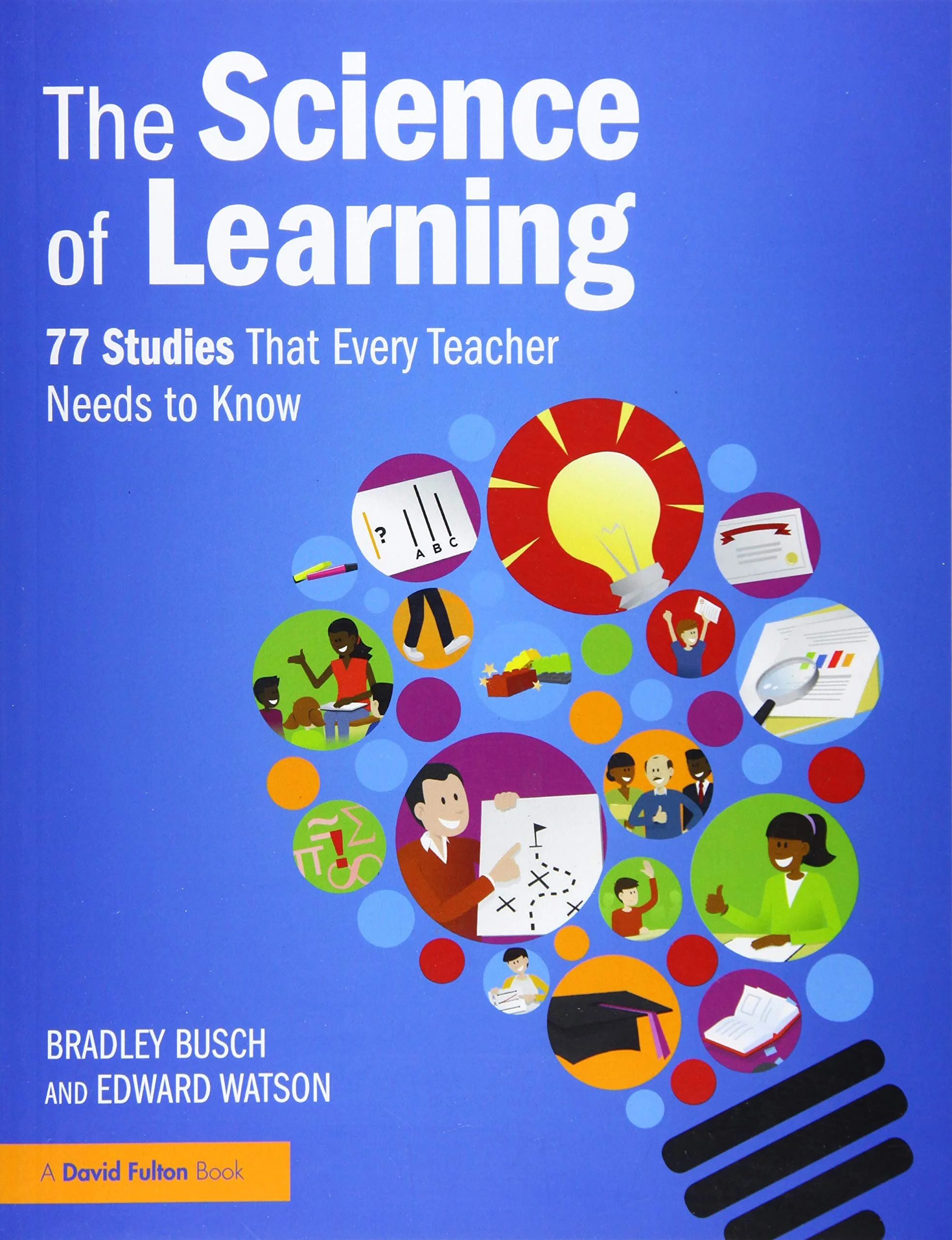Evidence-based education tends to be regarded in much the same way as Oscar Wilde viewed advice: useful for other people. After all, how many teachers have the time to go hunting for research that is: not behind a paywall; written in a language at least approximating English, and can be immediately applied in the classroom? Exactly. This book aims to solve these issues through the approach of presenting each research study as a double-page spread.
I have to say that initially, I was less than impressed, more because of the book's appearance than the idea, because each page features cartoon drawings, which I found off-putting. But I gradually warmed to the idea, especially as the drawings do relate to the text. Also, still on the matter of appearance, key statistics and other facts are made to stand out by being bolder, larger, or both. Occasionally, graphs and bar charts supplement the text as well.
On closer examination, the book reveals itself to have been designed in a very clever way. First, although the 77 studies cover a vast range of topics, they fall into one of seven themes: memory; mindset, motivation and resilience; self-regulation and metacognition; student behaviours; teacher attitudes, expectations and behaviours; parents; and thinking biases. Furthermore, these are colour-coded. This means that you can, if you wish, read all of the studies about, say, teacher attitudes at one sitting in order to get a good overview of the field. That's assuming you have the willpower to stay on task without getting sidetracked by other chapters.
Another aspect of the book which appeals to me is that it is very easy to dip into if you don't feel like reading it in any particular order.
Each case study consists of several sections. At the very beginning is a research question, followed by a description of how the researchers set about trying to answer it. For example, dividing 100 students into two groups according to particular criteria, and then setting various tests. The next section of the case study highlights the main findings. Then the reader is directed to related research (some of which is in this book). In the final part, the authors suggest what the implications for the classroom might be.
Examples of the research featured include memory, planning, growth mindset, IQ, student resilience, predicting future behaviour, homework, streaming, going for a walk, setting pre-questions, teaching others and eating breakfast. That list should give you a sense of the sheer range of the educational research cited here.
Some of the findings, such as the benefits of having breakfast, could be anticipated. However, having the backing of facts and figures would enable you to, say, make the case for introducing a breakfast club into school.
References at the back of the book will be useful to those wishing to delve more deeply into any of the studies.
Having read some of the original studies myself, I can say that the book reflects them accurately, and invariably in a much more engaging way than the original.
The great thing about this approach is that experimentation in your own classroom becomes doable. For example, studies have shown that telling pupils that they're not cut out for maths has a detrimental effect, which you'd probably expect; but telling them that they're really clever also has negative consequences. Armed with these kind of insights, you might resolve to change the kind of feedback you give in the future.
Two slight irritations are that each study is titled "The one about... ", which sounds to me like a stand-up comedy routine. I also think an index would have been useful.
Nevertheless, books about educational research which are both interesting to read and that you can just dip into for some bite-sized inspiration are noticeable by their absence. If you're a teacher who wants to find out about many interesting findings from educational research, without having to spend precious free periods or leisure time looking for it, you should buy this book. And if you're a team leader, buying a copy for each member of your team would not be a bad investment – especially if you used selected studies as the basis for team discussions.
This article was first published in SchoolsWeek.

